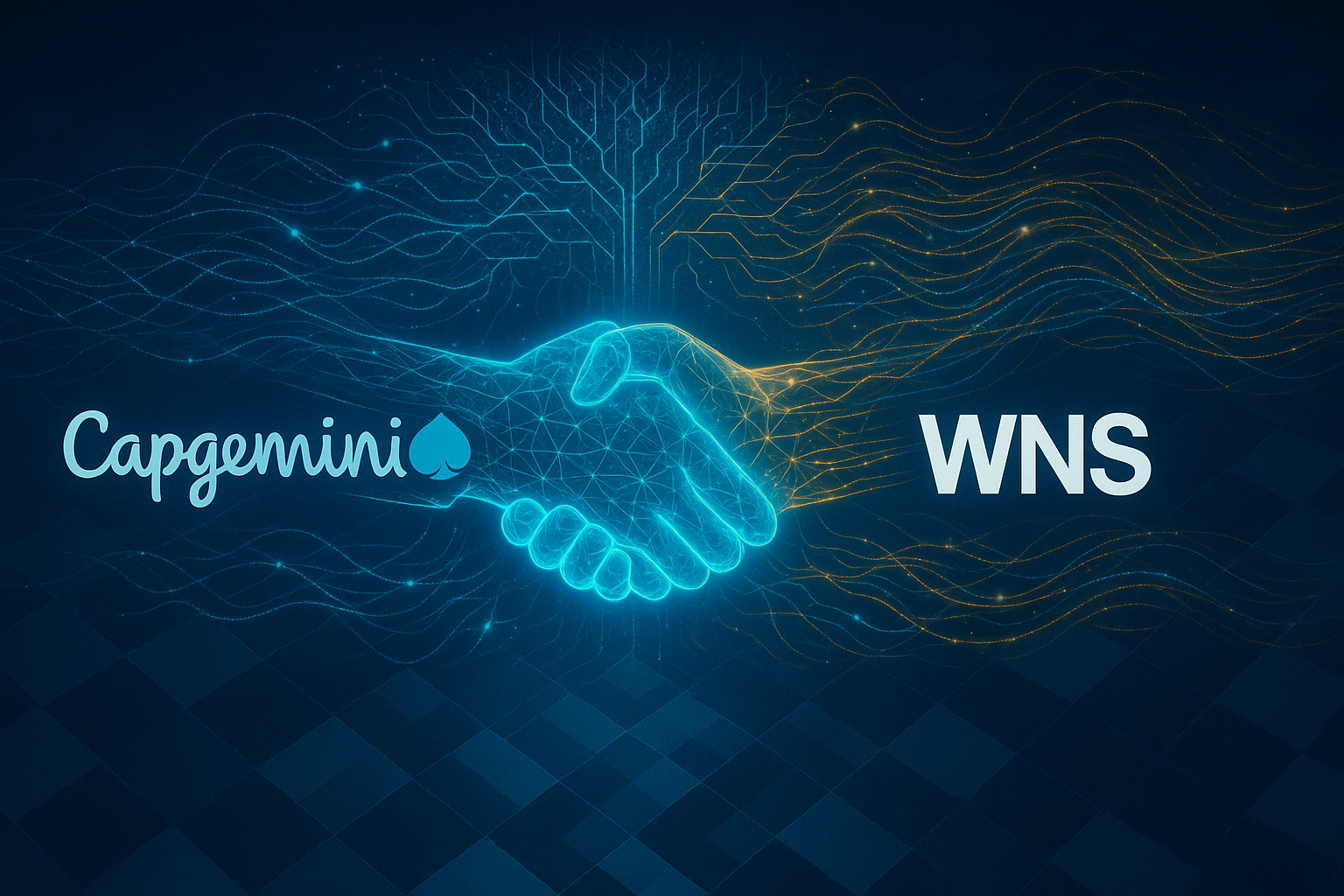The Capgemini WNS acquisition marks a seismic shift in the corporate world. Announced on July 7, 2025, the French consulting giant’s blockbuster $3.3 billion takeover of WNS is a defining moment. This all-cash deal represents one of the largest consolidations in the IT-BPM (Information Technology and Business Process Management) sector. But is this a strategic masterpiece designed for the future, or a massive, high-stakes gamble?
The Deal That’s Making Headlines
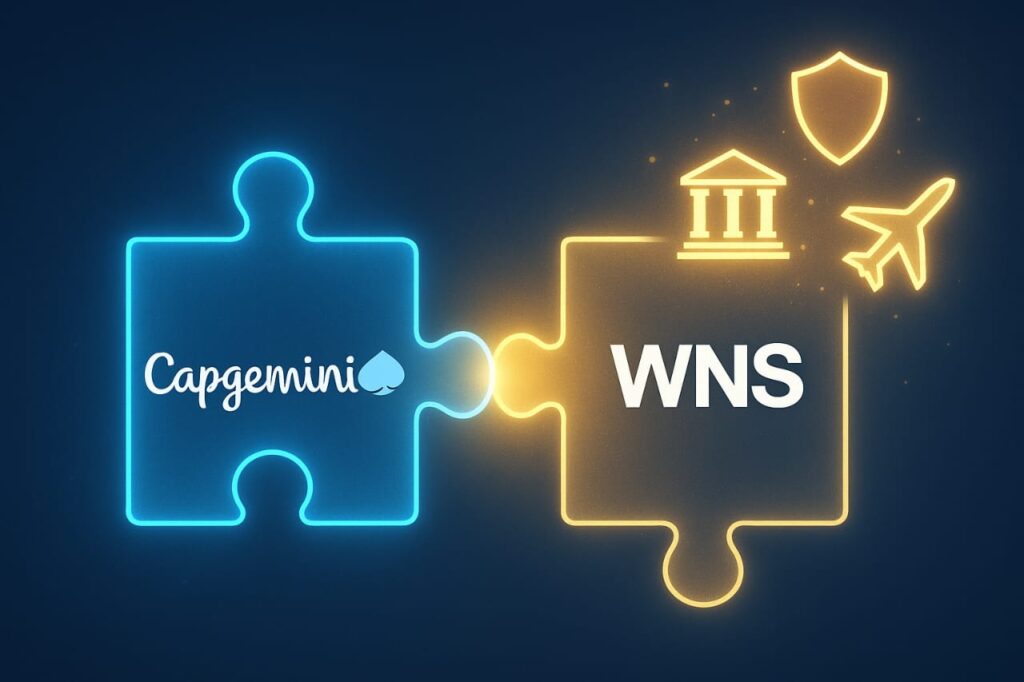
Capgemini is acquiring U.S.-listed WNS for $76.50 per share, representing a hefty premium that underscores its commitment:
- 28% above WNS’s 90-day average share price
- 27% premium over the last 30 days
- 17% premium to its July 3, 2025 closing price
With both companies’ boards unanimously approving the transaction, the deal is expected to close by year-end, solidifying the Capgemini WNS acquisition as a landmark event.
Why This Acquisition Makes Perfect Sense
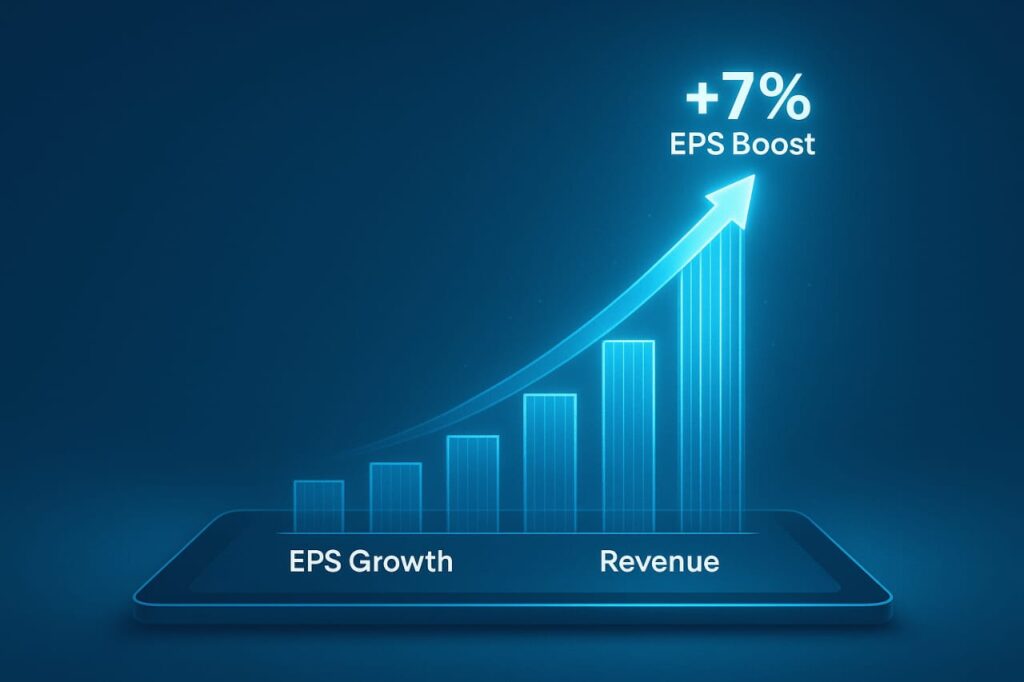
1. AI-Powered Transformation Strategy
Capgemini CEO Aiman Ezzat’s vision is crystal clear: capitalize on the “paradigm shift from traditional BPS to Agentic AI-powered Intelligent Operations.” (Agentic AI refers to AI systems that can proactively and autonomously perform complex tasks, make decisions, and interact with their environment to achieve specific goals, much like a human agent would. For more detail, see this Gartner analysis on autonomous systems). This isn’t just buzzword bingo – it’s a strategic pivot toward autonomous, intelligent business processes.
2. Deep Domain Expertise Acquisition
WNS brings specialized knowledge in high-value sectors, immediately strengthening Capgemini’s offerings in:
- The complex insurance industry
- Banking and financial services (BFS)
- Resilient travel and hospitality sectors
- Established relationships with blue-chip clients
3. A Premium Client Portfolio
The acquisition provides instant access to WNS’s impressive client roster, including industry leaders like United Airlines, Aviva, and Centrica. These aren’t just any clients – they’re established brands with substantial budgets for digital transformation.
4. The Foundation for AI Excellence
Business Process Services serve as the backbone for AI deployment. By acquiring WNS, Capgemini is essentially buying the critical infrastructure and process data needed to build and scale advanced AI solutions effectively.
5. The Services-as-Software Evolution
Large enterprises are shifting from traditional Business Process Outsourcing (BPO) models to technology-driven “Services-as-Software” solutions. This deal positions Capgemini perfectly to lead this transition.
The Financial Projections Look Promising
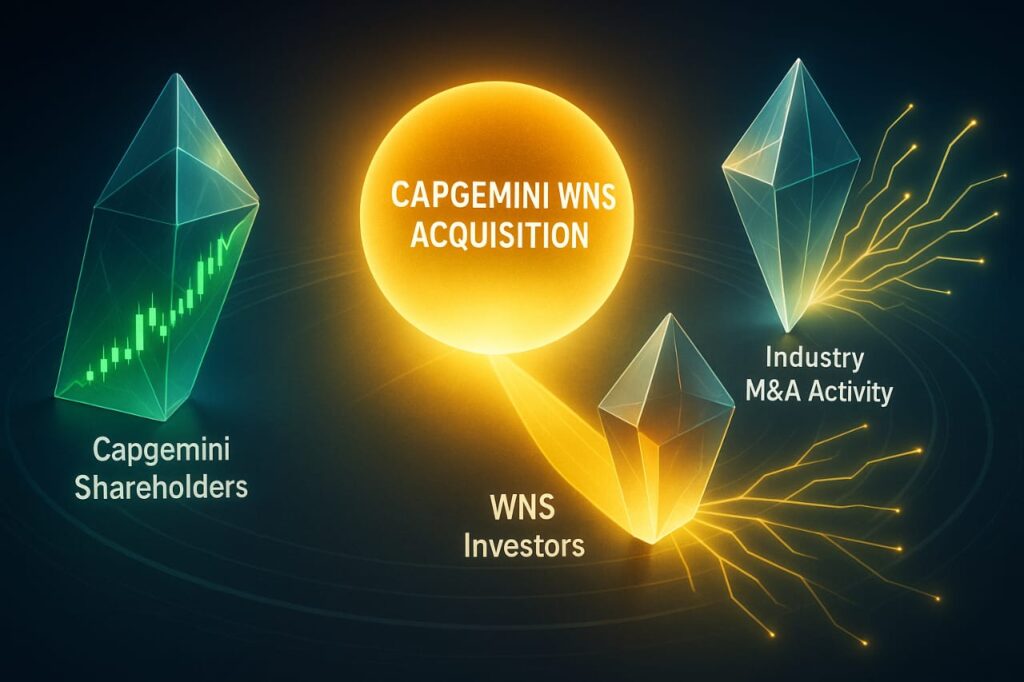
Capgemini’s financial outlook for the Capgemini WNS acquisition appears robust:
- 4% EPS accretion expected in 2026 (before synergies)
- 7% EPS boost projected for 2027 (post-synergies)
- Immediate revenue growth and operating margin improvements anticipated
(EPS accretion is an increase in a company’s earnings per share resulting from an acquisition. It’s a key metric used to judge the financial merit of an M&A [Mergers and Acquisitions] deal. You can learn more about it on Investopedia).
These aren’t modest projections – they represent significant value creation if executed properly.
The Concerning Red Flags

6. Integration Complexity
Merging two large organizations is notoriously challenging. The $3.3 billion price tag doesn’t include WNS’s net financial debt, making the actual financial commitment even higher. The pressure is on to avoid common integration pitfalls.
7. The Double-Edged Sword of AI Disruption
While Capgemini is betting on AI, the technology’s rapid evolution could undermine existing business models. Investors often fear that AI might cannibalize traditional service offerings faster than new ones can be built. Achieving the projected 4-7% EPS accretion depends entirely on seamless integration and navigating this disruption successfully.
The Broader Market Context
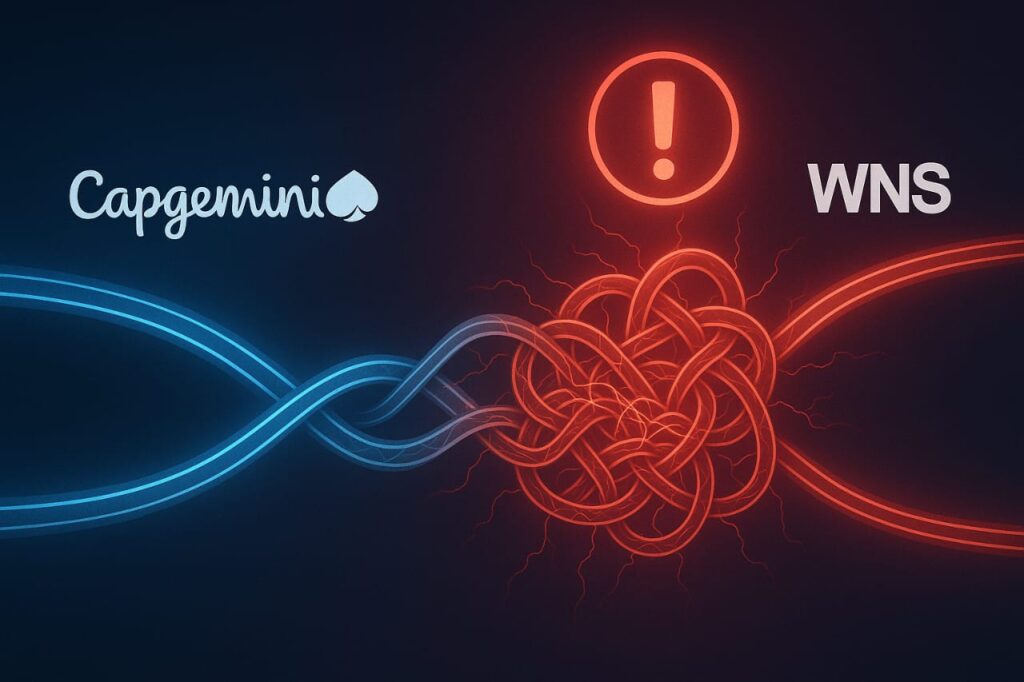
This acquisition isn’t happening in isolation. Companies are in an “AI arms race,” scrambling to develop, acquire, or integrate AI capabilities. Capgemini’s bold move signals its intention to dominate the AI-powered business process services market. The shift from automation to autonomy represents a fundamental change, where organizations that have already digitized now seek to “reimagine their operating models by embedding AI at the core.”
What This Means for Stakeholders

- For Capgemini Shareholders: The deal could deliver substantial returns if integration succeeds. However, the cash outlay and execution risks are significant.
- For WNS Investors: The 17-28% premium offers immediate value, locking in a substantial gain.
- For the Industry: This consolidation could trigger more M&A activity as competitors race to gain scale and expertise in the AI-driven landscape.
The Verdict: Calculated Risk, Not a Reckless Bet
The Capgemini WNS acquisition appears to be a well-calculated strategic move. The rationale is sound, targeting market timing, strategic fit, and financial growth. However, success is not guaranteed. Flawless integration and rapid adaptation to technological change are paramount.
Key Takeaways
- This is one of the largest IT-BPM sector consolidations in recent history.
- The deal positions Capgemini to lead in AI-powered business process services.
- Financial projections suggest significant value creation potential.
- Major risks include integration complexity and AI sector volatility.
- The Capgemini WNS acquisition reflects a broader industry trend toward AI-driven operations.
The real test will be execution. If Capgemini integrates WNS seamlessly while delivering on its AI vision, this will be remembered as a defining moment. If not, it becomes a cautionary tale about betting big on rapidly evolving technology.
Disclaimer: This analysis is based on publicly available information and market trends. It should not be construed as investment advice or a recommendation to buy, sell, or hold any securities. Investors should conduct their own due diligence and consult with qualified financial advisors before making investment decisions. Past performance does not guarantee future results, and all investments carry inherent risks.
